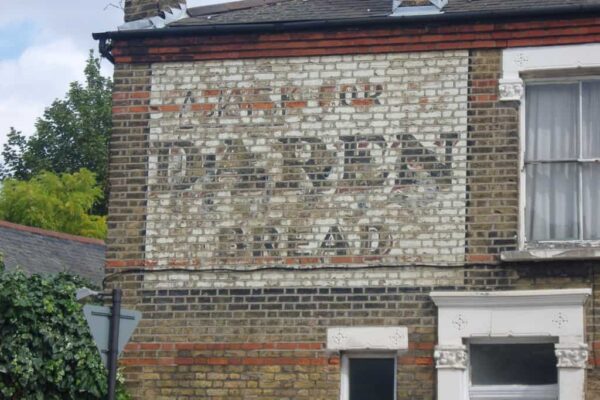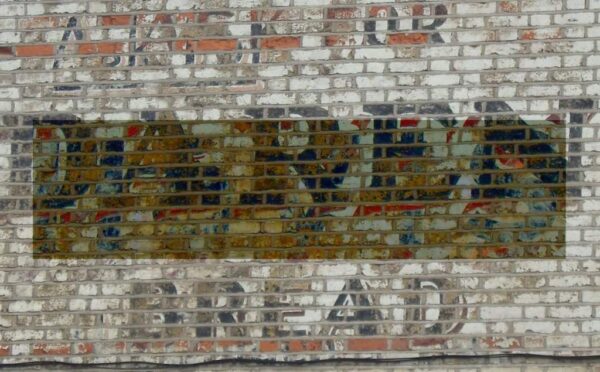7 Jan 2017
When Daren Became Hovis: A Bizarre Ghostsigns ‘Restoration’

‘Ask for Daren Bread’ was once the simple slogan on this ghostsign on Avignon Road, London, SE4. The above image was taken by Lisa Edwards in 2007, sourced here in the History of Advertising Trust Ghostsigns Archive. The site was likely a former bakery, sourcing its flour from the mills on the river Darent in Kent. Unlike many other examples, this sign doesn’t feature the name of the baker, a typical feature of what is described as ‘privilege’ advertising, whereby brands and manufacturers use their distributors and retailers to create co-branded signage.
Fast forward to 2015 and the wall has been repainted with signage for Hovis. The image below was taken from the Instagram feed of Look Up London and you can see it in Google Street View, with a ghosted street sign here.

This presents what is, to my knowledge, a unique example of the ‘repainting’ of a ghostsign, shifting the actual brand advertised to what was once a fierce rival. However, with a bit more digging, and reading through the comments on this Brockley Central blog, I looked again at the original photo.

This is Lisa Edwards original photo, adjusted to accentuate the barely visible word Hovis, sitting just below the more prominent Daren name. The original was therefore a palimpsest. It is claimed in the comments on the blog post, and this discussion on Twitter, that the firm that completed the works were referencing this older piece of signage in their ‘restoration’. However, this is flawed on a couple of counts. First is that the position of the Hovis lettering is not consistent between the before and after photos. They have set it much higher on the wall, and at a smaller size, than where is was originally. Second is that the slogan ‘Dainty Bread’ is not one that I have ever seen used by Hovis on either wall or press advertising. It could be argued that this slogan was not attached to Hovis, but rather the bakery/tea shop located on the site but, as with Daren above, I would then expect to see the name of this baker/shop somewhere on the sign.
There are some unanswered questions here in this curiosity of a restoration. As with the one in Cambridge, I think that leaving it alone would have been preferential to this interference that has negatively affected both the historical value of the wall, and the authenticity of what is painted on it. I would be very interested in additional information relating to the work undertaken on this sign, and to be proved wrong about my assertions regarding its inaccurate referencing of older signage that was once located on the wall.
Thank you to Look Up London for helping with sources for this post, see more writing about restorations here on the Ghostsigns Blog.


